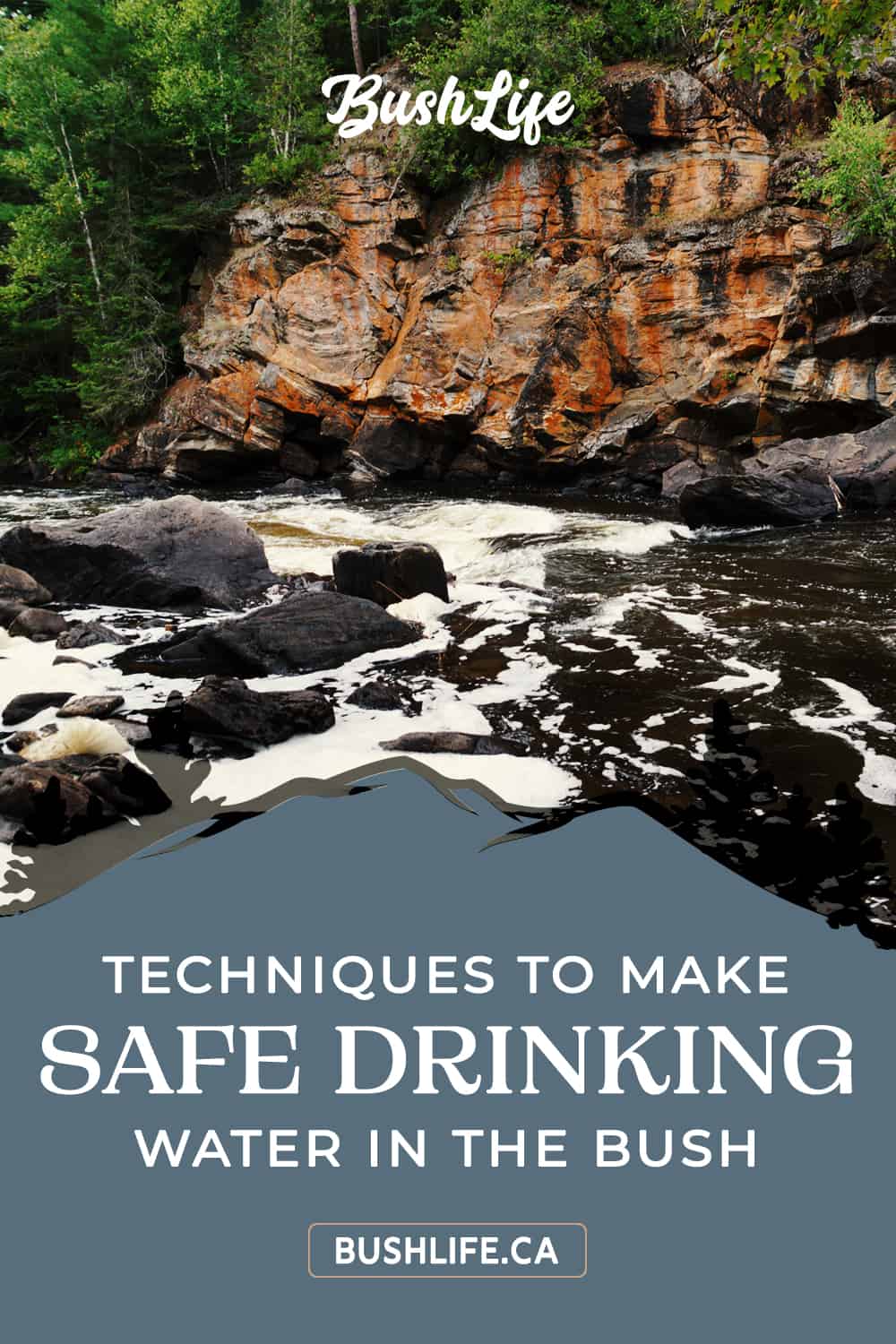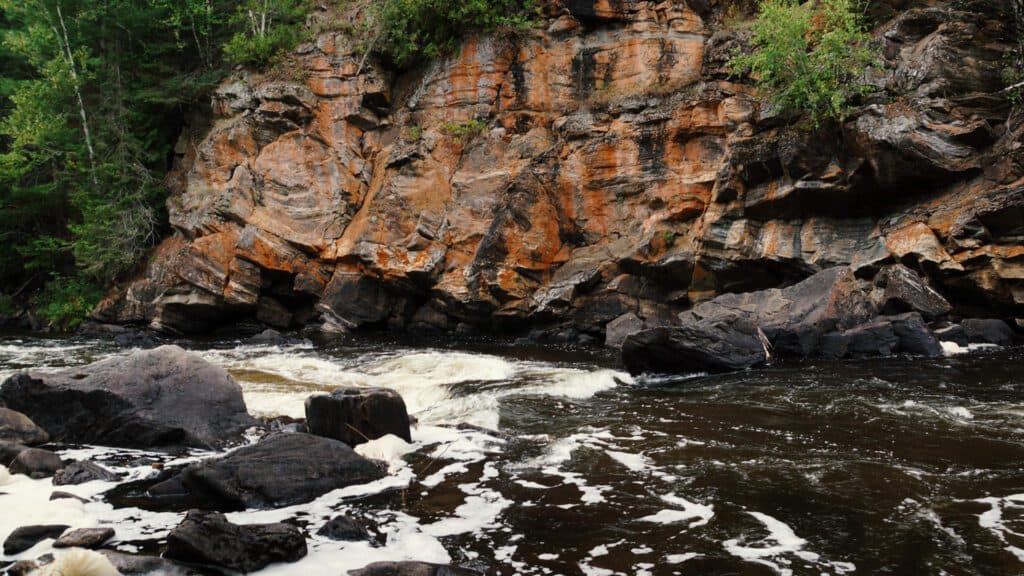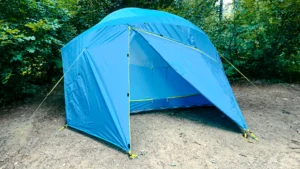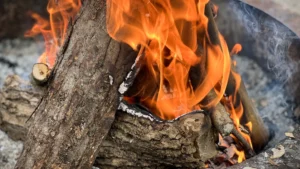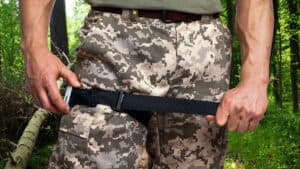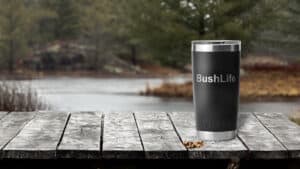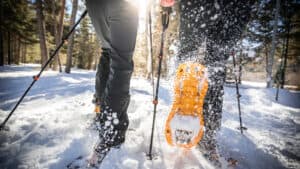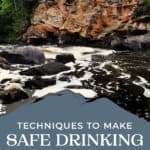Water is abundant, especially in Canada. It’s everywhere amongst the lakes, rivers, streams, marshes, etc. It’s also vital for survival, as you’ll only live for about three days without it. But water in nature has dirt, viruses and bacteria that are harmful. Hence, we’ll need to make safe drinking water when traversing the bush, and I’ll show you how.
Discloure: Posts may contain affiliate links. Purchases made through our links result in a small commission to us at no charge to you. We only recommend products that meet our brand standards based on testing and first hand use by our authors.
Disclaimer: Everything in this post regarding “safe” or potable drinking water is based on standard and generally accepted methods. Even in the military or as per government recommendations (link provided). Even tap water is considered “mostly” safe in Canada and the US. The US alone has millions of people exposed to unsafe levels of various substances from tap water, such as bacteria, chemicals, heavy metals, radioactive particles and so on. The problem is generally worse in rural areas. So, I will stress that the only absolute safe water is water tested by a lab. With that out of the way, let’s get started.
- Filtering Versus Sterilizing to Make Safe Drinking Water
- The Cotton Bandana Filter
- Sterilizing Water
- Why Carry Chemical Sterilization for Safe Drinking Water in the Wilderness?
- Containers – Very Important
- Old-School vs. Modern Methods of Making Safe Drinking Water
- The EASY Way to Make Safe Drinking Water
- Finding a Water Source in the Wilderness
- Check the Quality of Your Water Source
- What if You Don’t Have Any Means to Purify Water?
- Concluding Making Safe Drinking Water
Filtering Versus Sterilizing to Make Safe Drinking Water
There are two main components to making safe drinking water in the wilderness. Filtering generally removes particles and debris. Sterilizing will remove bacteria, viruses, and these nasty little guys called protozoa.
The best place to start collecting is from moving water, as it’s generally cleaner than standing water. If you can find a spring, you’re in luck, as it’s the absolute cleanest because of underground filtration. And less likely to have been contaminated above ground! Good luck finding springs, as they’re not easy to find.
Anytime you have a choice of water source in the wilderness, scoop your water from a river versus a lake or any other body of water.
Take this concept further and consider a stagnant pond with debris floating on top. Firstly, it doesn’t even smell nice, let alone provide an opportunity to collect water without debris getting in. It’s also probably full of bacteria and algae. But, in a survival situation, it may be your only choice, so we start with water filtration or water purification, as some would call it.
The Cotton Bandana Filter
Unless you are scooping nice clean water from a flowing water source, you’ll need to filter it. Tightly drape a clean cotton bandana over the mouth of your collection container. A cotton bandana should already be part of your hiking or survival pack. If not, read my post on what to carry into the backcountry when engaging in various outdoor activities. I pack one myself for this very purpose. The bandana will let the water through and keep the debris out. That in itself can be half the battle if your source is, let’s say, nasty. From there, you proceed to sterilization.
Further Reading: Day Hiking 101: What to Bring and Why
Sterilizing Water
There are multiple ways to sterilize water in the wilderness, but only two apply. Let’s take a look at what those two sterilization methods are.
Option 1: Boiling
The good old boil. According to the EPA in the US, you’ll need a rolling boil for at least 1 minute. For altitudes above 1,000 meters (5,000 ft), you’ll require a rolling boil for 3 minutes. The boiling method is chemical-free, and I’ll quote the EPA: “kill pathogenic bacteria, viruses and protozoa.” It’s your best shot by far. But don’t take any chances, and make sure you boil it well.
Further Reading: 7 Fire Kit Survival Essentials That You Should Carry
Option 2: Chemical Sterilization
The EPA has a page that provides information on how much chlorine bleach is required to sterilize various volumes of water. While handy, that’s more for dealing with disasters than the bush. The point is that it takes bleach to sterilize water for drinking, and that’s a scary thought. Well, kind of, you’ve been drinking chlorine for years in tap water!
In the bush, we use tablets. The old-school military iodine tablets were always the gold standard, but they are not as easy to find. Nowadays, there are all sorts of concoctions using various chemicals, and it looks like chlorine is the modern winner. They are not always in tablet form either – you can find them in powder packs as well. Here is a table to show you the difference between Chlor-Floc vs. Aquatabs.
| Chlor-Floc | Aquatabs |
|---|---|
| Satchel form | Tablet form |
| Includes coagulants (clarifies water) | Includes coagulants (clarifies water) |
| 10 minutes to ready | 30 minutes to ready |
| Chlorine-based | |
| Advertises to remove “most” bacteria | Advertises to not be effective at removing protozoa |
I carry Chlor-Floc packs and have included Aquatabs here as a popular alternative. I will only use Chlor-Floc in a survival situation. Both options have active ingredients most people can’t spell, and chemicals can convert to other chemicals. Case in point, Chlor-Floc becomes chlorine, and I believe the Aquatabs do too. They both, however, advertise safe drinking water and are widely used for this, even though the fine print has some exclusions. One satchel pack or tablet can purify one litre of water.
Why Carry Chemical Sterilization for Safe Drinking Water in the Wilderness?
Simple. Water with some chemicals is better than no water! Period! Even municipal tap water has chemicals – some of them can be nasty. The satchel pack or tablet is very tiny and not hard to sneak into your backpack.
Even though you can make a fire in the snow, there may be times when it’s too cumbersome to make a fire. Maybe it’s too wet, or you lost your fire-making sources. There is also something the military refers to as a “non-permissive” environment. Ie. A situation where a fire will give up your position or bring you harm. Maybe you are in a hurry to evade a storm. For whatever reason, there are times to turn to chemicals for safe drinking water. I carry them for survival reasons but try not to use them.
Containers – Very Important

Double Wall Containers For Safe Drinking Water Only
Carrying the correct container for water purification is vitally important. Everyone is chasing a thermos-style container to retain heat or cold longer. I use a YETI and have an entire post that reviews YETI’s Drinkware. In fact, all the containers in the photo are YETI products belonging to my family. And that’s not all of them either.
The YETI Rambler Bottle is my go-to in particular. It’s the black one on the bottom left. You’ll always find me toting my YETI around as it’s amazing at keeping coffee hot for a day out at the hunt camp or a snowmobile run in the bitter cold. Check out YETI’s drinkware lineup for a bottle that can hold up to your activity level.
YETIs are also great for storing safe drinking water at any temperature. Pay attention to the “safe” part as the plot thickens immediately below.
Single Wall Containers

A massive problem with insulated or double-wall containers (like YETI and every other maker) is that the very thing that provides convenience (temperature) makes it impossible to use for boiling water. That is why you’ll ALWAYS find a single-walled container in my pack, particularly the Pathfinder Bottle and Nesting Cup Set. There should be a single-walled container in yours as well!
The bottle is of single-wall construction, non-insulated. With it, you can collect dirty water and boil it, leaving the entire contraption sterilized. The same goes for the nesting cup, which has fold-out handles. You can boil a lot of water this way. Ie. Enough water for soup and coffee.
Further Reading: How To Use a Ferro Rod the Easy Way
Once boiled, the bottle will store your water for safe transport, and it nests inside the nesting cup for tighter storage in your pack. The bottle is sized on purpose to be correct for one chemical tablet – for times that you can’t make a fire.
Looks can be deceiving. What many may perceive as a simple tin bottle, in turn, is a bad-ass, safe drinking water machine.
Old-School vs. Modern Methods of Making Safe Drinking Water
Sorry folks, I’ve bored you with old-school methods up until now. For good reason, though. There are no outdoor stores in the bush selling fancy filters. You now know how to make safe drinking water in the wilderness with a steel container and a fire! And a metal container of some form is a lot easier to come across.
If you get stranded while ATVing or snowmobiling, I guarantee you can pull a metal part off your vehicle to hold water! The drive belt cover of a sled is a perfect example.
Now that you know the basics and can survive a bad situation, let’s look at a few modern methods of purifying water.
The EASY Way to Make Safe Drinking Water
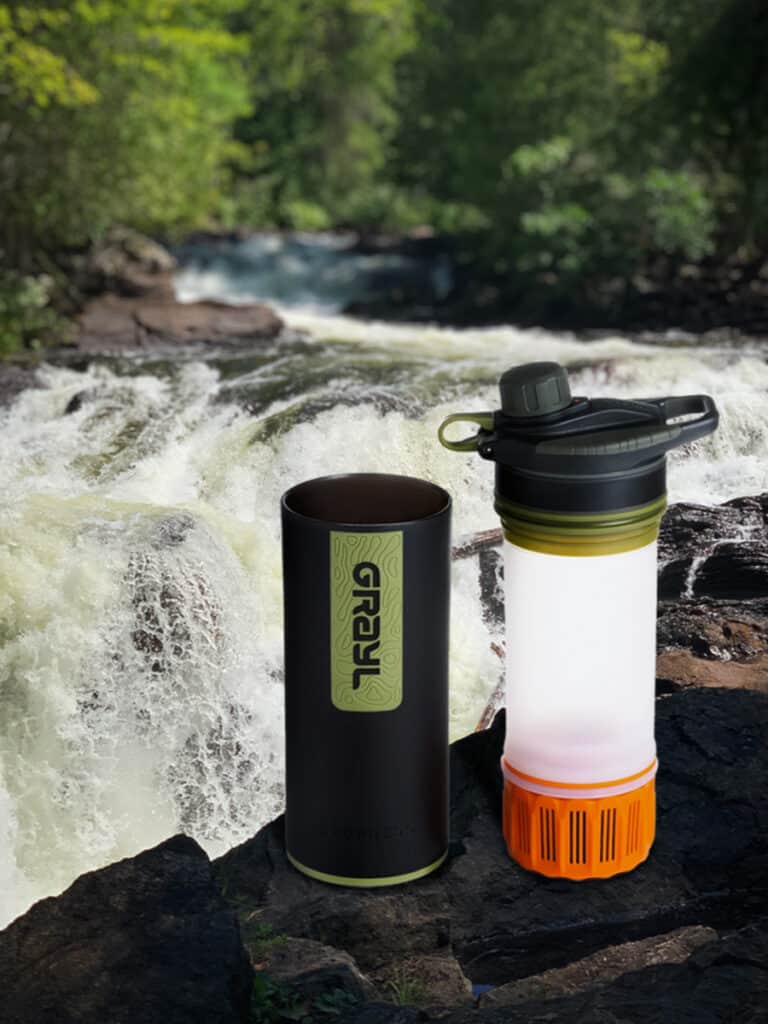
One of the easiest and quickest methods of water purification in the wilderness is using a water purification system like the Katadyn Befree.
The Katadyn can filter and sterilize water in one step. It’s such a simple process: sterilization through micro-filtration. The filter goes down to 1 micron effectively removing 99.9999% of bacteria, including protozoans. That is a level that’s beyond EPA approval, and it’s done chemical-free.
The Katadyn Befree holds .6 litres of water and rolls up into nothing. It also weighs almost nothing. It’s an ideal companion for your hiking pack or any survival backpack. I keep one in the side pocket of my pack at all times.
Another big contender is the Grayl GeoPress. Its function and methods are the same as the Katadyn. The difference is it comes in a very sturdy container. Naturally, it also has a more expensive price tag. Fortunately, it is worth every penny, as the quality is superb. The GeoPress is also used heavily by several big names in the outdoor world, and I can vouch for it wholeheartedly.
While Katadyn’s filter is good for 1000 litres, the Grayl stops much shorter at 250 litres – but the filter is replaceable. I can personally vouch for both of them as I own and use them myself.
Finding a Water Source in the Wilderness
You may be thinking, this is all nice and dandy, but what if you can’t find a water source? I only have one real trick, and that is to follow the animals. Don’t forget that you are not the only one that needs water to survive.
Low, fast-flying birds are a great indicator. They fly low when heading for water. They also have a much better viewpoint than you to find it. Low-flying birds are a telltale sign in the mornings and early evenings.
On a goose hunt, I sat on the river’s edge and saw at least a hundred geese hit up a nearby field to feed. By early afternoon, they hit the river for a drink. Birds won’t necessarily guide you to water, as it depends on what they’re looking for. One thing for sure is that the birds will sooner or later end up at a water source.
Game trails are the paths walking animals take. They are similar but a lot more difficult to follow.
You can also observe the terrain and look for higher elevations that drop to lower ones. Valleys will hold water. If all else fails, look for better-looking vegetation or more mosquitos. These are good indicators that the area sees more water or even has water.
Snow is a good source. Unfortunately, it comes with the same general hazards as water. Don’t consume it without sterilizing it. And be warned, you need to melt a lot of snow to make a little bit of water.
Check the Quality of Your Water Source
Animals intake food and water. They also generate waste just like we do, and they’re not so discriminate about where they do their business. Nor do they control where they die. So, while you never fully know what contaminants lurk, what you can do is check upstream a bit before collecting your water downstream. You are looking for waste or dead animals. If in doubt or anything looks off, you can work your way farther upstream until things look cleaner.
Also suggested here is that you don’t collect water from where you see animals congregating. So, while you may follow them to a source, move upstream for collection.
What if You Don’t Have Any Means to Purify Water?
I guess you are going home early:) Or at least when your good water runs out! But what if it’s a survival situation and you can’t go home? You will have some serious decisions to make.
The clock is ticking, and you will eventually NEED water. Watch for signs of dehydration to gauge whether you are in trouble:
| Signs of Mild Dehydration | Serious Dehydration |
|---|---|
| Extreme thirst | Rapid breathing, heartbeat |
| Less frequent or dark urination | No urination |
| Dry skin, mouth | Fainting, shock |
| Dizziness, fatigue | Confusion |
If you experience symptoms of serious dehydration, you will need to seek immediate medical attention, which, in this case, you can’t. Without water, your mental capacity will also diminish. In other words, you’ll want to figure things out before it gets too bad.
Generally speaking, illness from unsafe drinking water can take a while to set in, sometimes even days. There is a camp that thinks death is coming anyway, so you might as well extend your time to try and survive – take the water and deal with sickness, which is generally treatable after rescue. The other camp says, don’t do it no matter what – you’ll only make matters worse.
I know what I would do in this case, but I can’t answer this for you. I bring it up, as in circumstances like these, we generally fall back on our training when bad things happen. Being prepared with the right gear and knowledge will help you survive. You can survive by making natural water filters to make survival water, which we will cover in a future post. You can also treat illness from bad water by carrying a Jase Antibiotic Kit in your pack. If you take the extra steps to stay prepared, you can survive!!
The good news is I’ve never been there, nor has anyone I know. The more you prepare your gear AND skills, the less likely you’ll EVER find yourself in this situation! That’s the whole point of this post.
Further Reading: Emergency Antibiotic Kit: You Need to Have One
Concluding Making Safe Drinking Water
You’ll quickly notice on this site repeated references to carrying multiple ignition sources to make fire. A minimum of 3, to be exact, and you’ll find that quite common amongst serious outdoors enthusiasts and even in military training. Now, you also know that there are multiple ways of making safe drinking water in the bush.
While traversing the backcountry, make sure that you carry a cotton bandana, sterilizing chemicals, a single wall bottle to boil and an all-in-one water filter. Between these four items, we have three fantastic methods to make safe drinking water for survival. I don’t know about you, but when my survival depends on my ability to make water, I don’t take ANY chances. Water is just as important as fire. Make a point of carrying the essential filtration gear and practice the survival skill of purifying water!! And, that’s how to make safe drinking water in the wilderness!!
If you found this post helpful, please consider sharing it with others! Thank you!
Bookmark this post on Pinterest for future reference!
